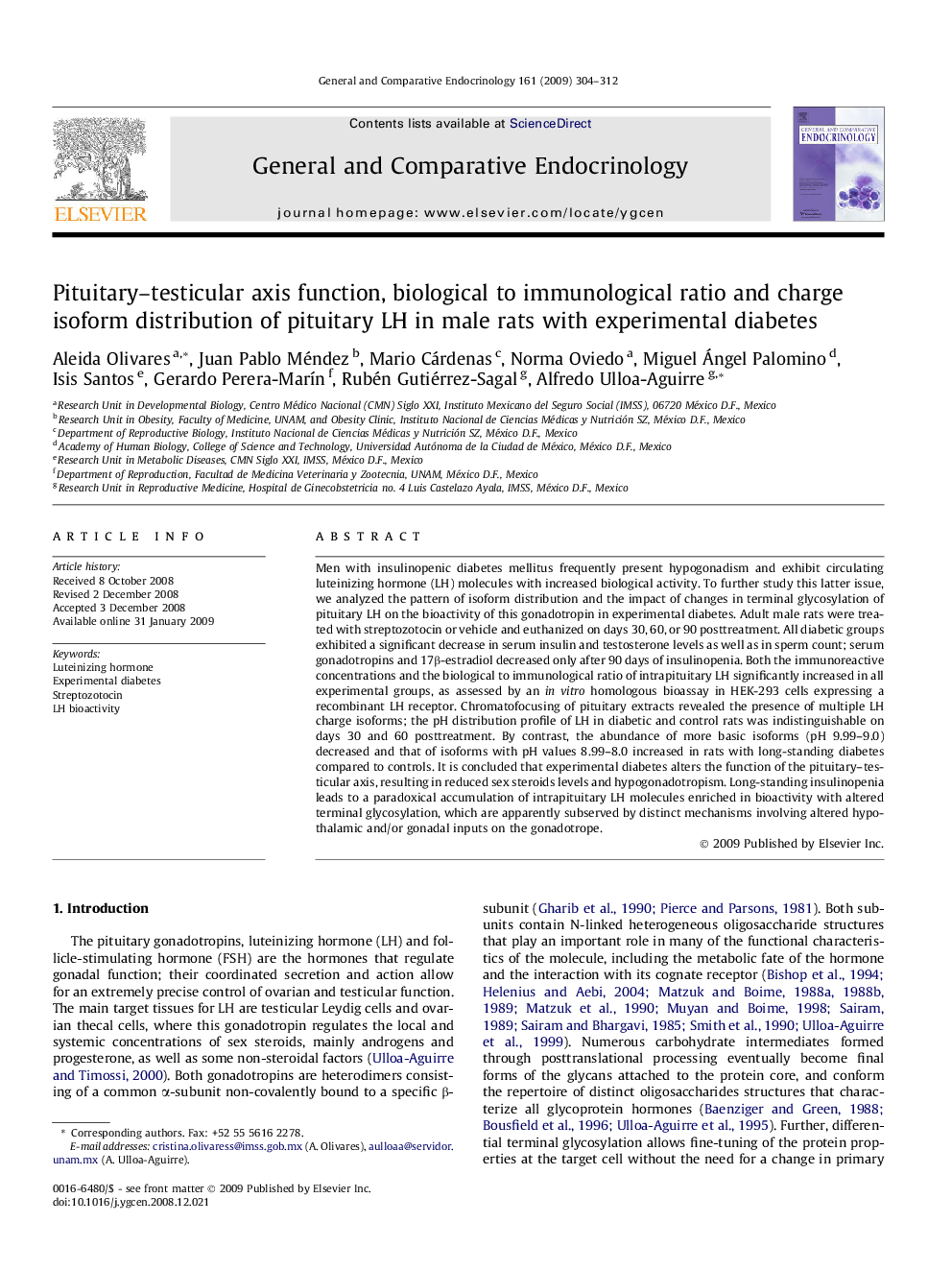| Article ID | Journal | Published Year | Pages | File Type |
|---|---|---|---|---|
| 2801536 | General and Comparative Endocrinology | 2009 | 9 Pages |
Men with insulinopenic diabetes mellitus frequently present hypogonadism and exhibit circulating luteinizing hormone (LH) molecules with increased biological activity. To further study this latter issue, we analyzed the pattern of isoform distribution and the impact of changes in terminal glycosylation of pituitary LH on the bioactivity of this gonadotropin in experimental diabetes. Adult male rats were treated with streptozotocin or vehicle and euthanized on days 30, 60, or 90 posttreatment. All diabetic groups exhibited a significant decrease in serum insulin and testosterone levels as well as in sperm count; serum gonadotropins and 17β-estradiol decreased only after 90 days of insulinopenia. Both the immunoreactive concentrations and the biological to immunological ratio of intrapituitary LH significantly increased in all experimental groups, as assessed by an in vitro homologous bioassay in HEK-293 cells expressing a recombinant LH receptor. Chromatofocusing of pituitary extracts revealed the presence of multiple LH charge isoforms; the pH distribution profile of LH in diabetic and control rats was indistinguishable on days 30 and 60 posttreatment. By contrast, the abundance of more basic isoforms (pH 9.99–9.0) decreased and that of isoforms with pH values 8.99–8.0 increased in rats with long-standing diabetes compared to controls. It is concluded that experimental diabetes alters the function of the pituitary–testicular axis, resulting in reduced sex steroids levels and hypogonadotropism. Long-standing insulinopenia leads to a paradoxical accumulation of intrapituitary LH molecules enriched in bioactivity with altered terminal glycosylation, which are apparently subserved by distinct mechanisms involving altered hypothalamic and/or gonadal inputs on the gonadotrope.
